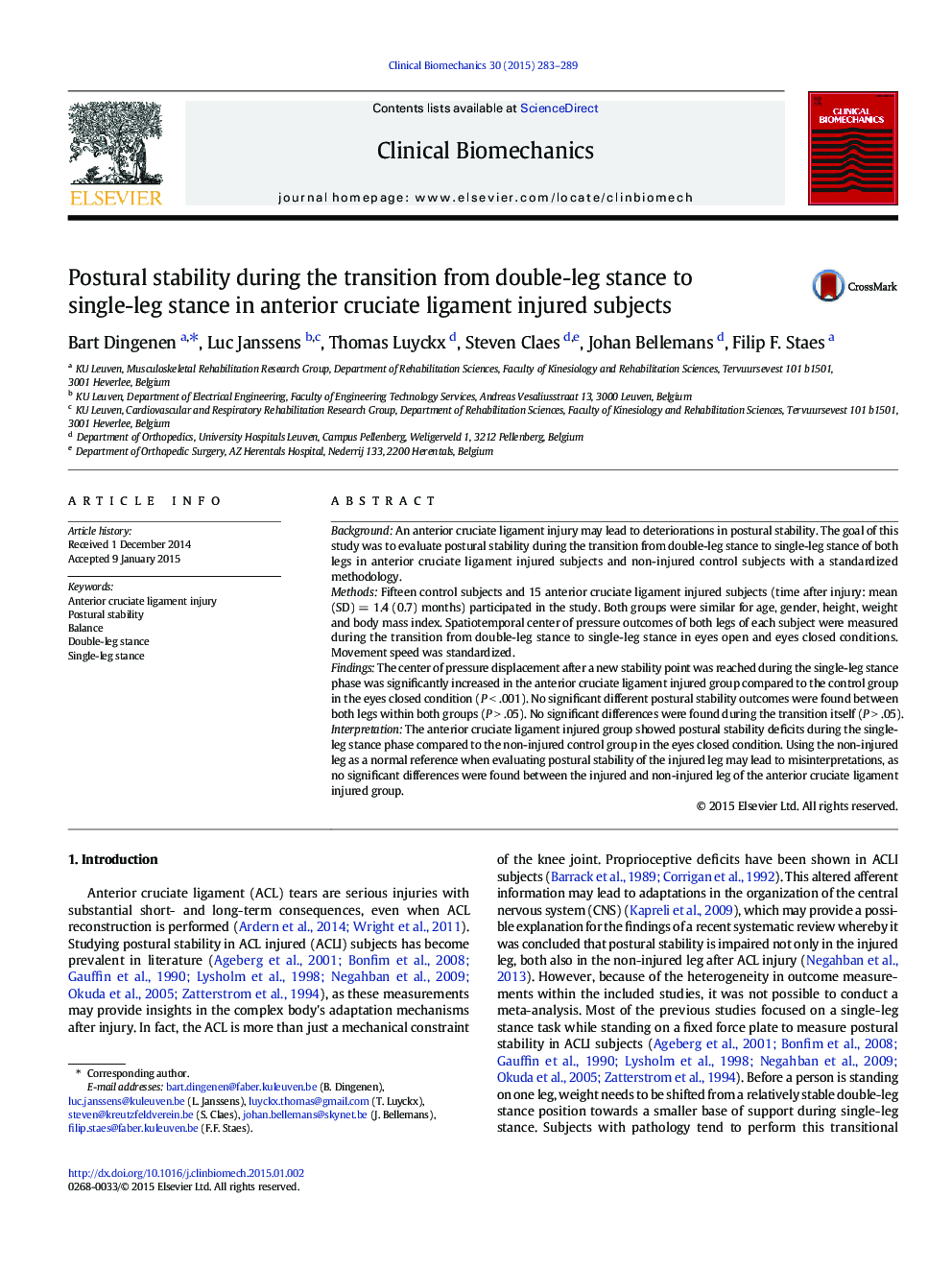| Article ID | Journal | Published Year | Pages | File Type |
|---|---|---|---|---|
| 6204724 | Clinical Biomechanics | 2015 | 7 Pages |
â¢Postural stability was studied with a standardized method during a balance task.â¢Anterior cruciate ligament injured subjects were compared with control subjects.â¢The injured group showed a decreased postural stability when eyes were closed.â¢No differences were found between legs within both groups.
BackgroundAn anterior cruciate ligament injury may lead to deteriorations in postural stability. The goal of this study was to evaluate postural stability during the transition from double-leg stance to single-leg stance of both legs in anterior cruciate ligament injured subjects and non-injured control subjects with a standardized methodology.MethodsFifteen control subjects and 15 anterior cruciate ligament injured subjects (time after injury: mean (SD)Â =Â 1.4 (0.7) months) participated in the study. Both groups were similar for age, gender, height, weight and body mass index. Spatiotemporal center of pressure outcomes of both legs of each subject were measured during the transition from double-leg stance to single-leg stance in eyes open and eyes closed conditions. Movement speed was standardized.FindingsThe center of pressure displacement after a new stability point was reached during the single-leg stance phase was significantly increased in the anterior cruciate ligament injured group compared to the control group in the eyes closed condition (PÂ <Â .001). No significant different postural stability outcomes were found between both legs within both groups (PÂ >Â .05). No significant differences were found during the transition itself (PÂ >Â .05).InterpretationThe anterior cruciate ligament injured group showed postural stability deficits during the single-leg stance phase compared to the non-injured control group in the eyes closed condition. Using the non-injured leg as a normal reference when evaluating postural stability of the injured leg may lead to misinterpretations, as no significant differences were found between the injured and non-injured leg of the anterior cruciate ligament injured group.
